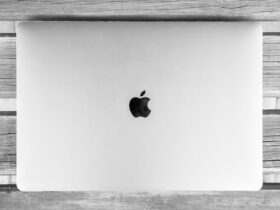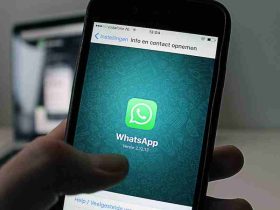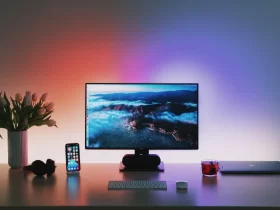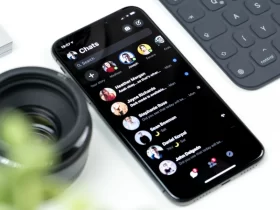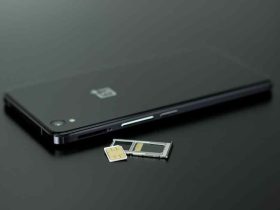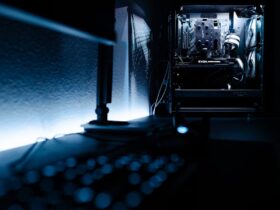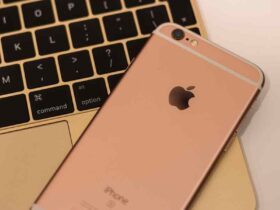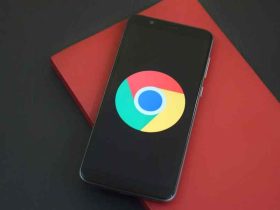Tempered glass screen protectors have become an essential accessory for modern smartphones and tablets, providing an extra layer of protection against scratches, impacts, and smudges. However, one frustrating issue that often arises during their installation is the presence of stubborn air bubbles. These pesky bubbles not only compromise the aesthetics of the device but can also interfere with touchscreen responsiveness and impair screen clarity. To ensure optimal performance and a flawless user experience, it is crucial to know how to effectively remove air bubbles from tempered glass screen protectors. In this comprehensive guide, we will explore the causes of air bubbles, the materials needed for removal, and step-by-step techniques to achieve a bubble-free installation. By following these instructions, you can bid farewell to those unsightly bubbles and enjoy the full benefits of your tempered glass screen protector.
How To Remove Air Bubbles From Tempered Glass Screen Protector?
Step-by-Step Guide on Removing Air Bubbles from Tempered Glass Screen Protector:
Step 1: Identify the Air Bubble
Before you begin the removal process, carefully examine the tempered glass screen protector to identify the location of the air bubble. This will help you target the specific area during the removal process.
Step 2: Remove the Tempered Glass Screen Protector
Gently lift the edges of the tempered glass screen protector using your fingernail or a thin, non-metallic tool. Be cautious to avoid applying excessive force that could potentially damage the device or the screen protector itself. Slowly peel off the protector from one corner until it is completely removed.
Step 3: Clean the Device Screen and Protector
Thoroughly clean both the device screen and the removed tempered glass screen protector to eliminate any dust, fingerprints, or debris that could interfere with reinstallation. Use a microfiber cloth or a lint-free cloth along with a screen cleaning solution or isopropyl alcohol to achieve a pristine surface.
Step 4: Reapply the Tempered Glass Screen Protector
Align the edges of the tempered glass screen protector with the device screen, ensuring that the camera and home button (if applicable) are properly positioned. Slowly lower the protector onto the screen, allowing it to naturally adhere while minimizing the introduction of air bubbles.
Step 5: Bubble Removal Techniques
There are several techniques you can employ to remove air bubbles from the newly installed tempered glass screen protector:
- Squeegee Technique: Starting from the center of the screen, gently press the squeegee tool against the tempered glass and gradually move towards the edges. Apply even pressure and repeat the motion multiple times until the air bubbles are pushed out.
- Credit Card or Similar Flat Object Method: Use a credit card or a similar flat object with a smooth edge. Place it on the screen protector, aligning it with the air bubble. Applying gentle pressure, gradually push the card towards the edge of the protector, forcing the air bubble to escape.
- Tapping and Pressing Technique: Tap lightly on the surface of the air bubble using your finger or a stylus. Simultaneously, apply gentle pressure around the bubble’s edges to encourage the air to move towards the nearest edge, allowing it to escape.
- Heat Application Method: If the tempered glass screen protector is compatible with heat application, use a hairdryer or heat gun on a low setting to warm the surface. The heat helps to loosen the adhesive, making it easier for the air bubbles to dissipate. As the adhesive becomes more pliable, use a squeegee or similar tool to gently press out the bubbles.
Step 6: Final Touches and Evaluation
Once you have successfully removed the air bubbles, inspect the screen protector for any remaining imperfections or trapped particles. If necessary, gently smooth out any minor inconsistencies using a microfiber cloth or your fingertip. Evaluate the screen protector’s clarity and ensure that it adheres firmly to the device screen without any visible bubbles or gaps.
Explain The Causes Of Air Bubbles During Installation
Air bubbles can occur during the installation of a tempered glass screen protector due to various reasons. Understanding these causes is essential in preventing and effectively removing air bubbles. Here are some common factors that contribute to the formation of air bubbles:
Dust and Debris: Tiny particles of dust, lint, or other debris present on the device screen or the adhesive side of the screen protector can create air pockets when the protector is applied. These particles prevent proper adhesion and cause air bubbles to form.
Improper Alignment: Incorrect alignment during installation can result in uneven pressure distribution, leading to the entrapment of air bubbles. If the protector is not precisely positioned on the device screen, it may cause misalignment and air bubble formation along the edges.
Uneven Pressure Application: Inadequate or uneven pressure during the installation process can cause air bubbles to form. If the pressure is not uniformly applied across the protector, certain areas may not adhere properly, resulting in air pockets.
Inadequate Cleaning: Insufficient cleaning of the device screen before installation can leave behind oils, fingerprints, or residue, which can hinder the adhesion of the tempered glass screen protector. This can lead to air bubbles forming as the protector fails to adhere completely.
Trapped Moisture: Moisture or humidity present on the device screen or within the tempered glass screen protector can get trapped during installation, causing air bubbles to form. Moisture may be introduced through inadequate drying after using a cleaning solution or improper handling in a humid environment.
Quick Application: Rushing through the installation process without taking sufficient time to ensure proper alignment and smooth application can result in air bubbles. Hasty movements and applying the protector too quickly can create air pockets that are difficult to remove.
Troubleshooting Common Problems During Bubble Removal In Short
- If air bubbles persist despite your efforts, try reapplying the tempered glass screen protector from scratch, ensuring proper alignment and smooth application.
- Use a microfiber cloth or a dust removal sticker to gently remove any particles on the device screen or the adhesive side of the protector before reinstallation.
- Apply even pressure while using bubble removal techniques, ensuring that you evenly distribute force across the protector to eliminate air bubbles.
- Double-check the alignment of the tempered glass screen protector before pressing it onto the device screen to avoid misalignment and subsequent bubble formation.
- Thoroughly clean the device screen and the protector before reinstallation, ensuring that no fingerprints, oils, or residue are present that could hinder adhesion and cause bubbles.
- Allow sufficient time for the device screen and the tempered glass screen protector to dry completely before reapplying, ensuring no moisture is trapped.
- Avoid using excessive force or aggressive techniques during bubble removal, as this can damage the protector or the device screen.
- If the tempered glass screen protector is visibly damaged or compromised, it may be necessary to replace it with a new one to achieve a bubble-free installation.
The Potential Impact Of Air Bubbles On The User Experience
Air bubbles in a tempered glass screen protector can have several potential impacts on the user experience, including:
Air bubbles can create visual distortions and reduce the clarity of the device’s screen. The trapped air can cause light to refract differently, leading to a hazy or blurry appearance. This can be particularly noticeable when viewing images, videos, or text on the screen, detracting from the overall user experience.
Air bubbles can interfere with the touchscreen’s sensitivity and responsiveness. When there are bubbles present, they can create a barrier between the user’s finger and the screen, affecting the accuracy and precision of touch gestures. This can result in missed taps or swipes, making it more challenging to navigate and interact with the device effectively.
Air bubbles create an uneven surface on the screen, which can be uncomfortable and disruptive when using touch gestures. The presence of bubbles may lead to an inconsistent feel when sliding or swiping across the screen, causing friction or resistance that is not present with a smooth surface.
Air bubbles often act as magnets for dust, lint, and other particles, which can get trapped within the bubbles or collect around their edges. This accumulation can detract from the device’s aesthetics and cleanliness, as well as potentially scratch the screen if particles are abrasive.
Air bubbles may compromise the overall durability and effectiveness of the tempered glass screen protector. The presence of bubbles can weaken the protector’s adhesion, making it more susceptible to peeling or lifting at the edges. This can create an entry point for dust, debris, and even potential damage to the device’s screen.
Air bubbles in a screen protector can be unsightly and detract from the device’s overall appearance. This can be particularly important for individuals who rely on their devices for professional purposes or who prefer a sleek and polished aesthetic. Air bubbles may give the impression of poor installation or lack of attention to detail.
Final Words
In conclusion, air bubbles in a tempered glass screen protector can be frustrating and impact the overall user experience. However, with the right techniques and patience, it is possible to remove these bubbles and achieve a bubble-free installation.
By properly identifying the causes of air bubbles and following a step-by-step process, you can successfully remove the bubbles and restore the clarity, responsiveness, and aesthetics of your device’s screen. Remember to thoroughly clean the screen, align the protector accurately, and apply even pressure during installation and bubble removal.
FAQ’s
Can I reuse the tempered glass screen protector after removing it to remove air bubbles?
It is not recommended to reuse the tempered glass screen protector once it has been removed. The adhesive may lose its effectiveness, and the protector may not adhere properly, leading to potential issues with dust, debris, or more air bubbles.
What if I cannot remove all the air bubbles from my screen protector?
A2. If you are unable to remove all the air bubbles using the suggested techniques, consider reapplying the screen protector from scratch. Make sure to clean the device screen thoroughly and follow the installation instructions carefully to achieve a bubble-free installation.
Are there any alternative methods to remove air bubbles?
While the techniques mentioned in the guide are commonly used, there may be alternative methods suggested by manufacturers or other users. It’s important to consider the specific recommendations provided with your tempered glass screen protector to ensure compatibility and avoid potential damage to your device.




